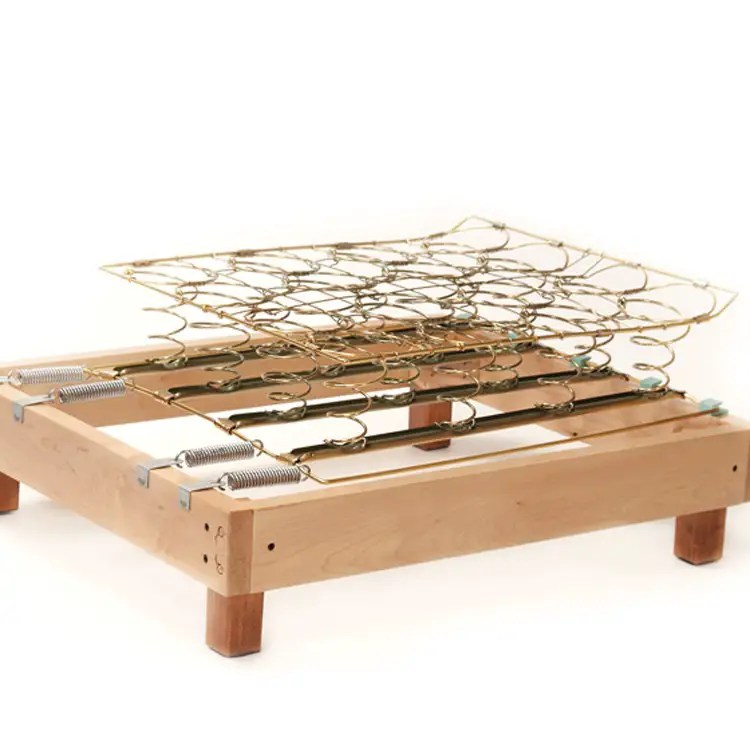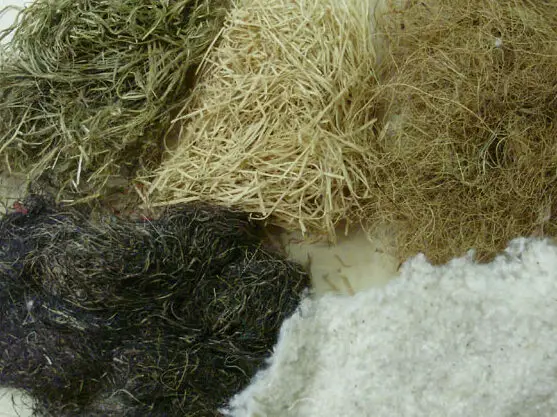If you’re looking to purchase a new sofa, it’s essential to make sure that it is of good quality. But how do you tell if a sofa is good quality?
In this blog post, we’ll explore the key factors to consider when assessing the quality of a sofa and provide some tips on how to tell if a sofa is good quality.
How To Tell If a Sofa is Good Quality
A sofa is an essential piece of furniture in any home, and it’s essential to choose one that’s not only comfortable but also of good quality. However, it can be challenging to determine whether a sofa is of good quality or not, especially if you’re not a furniture expert.
Knowing how to tell if a sofa is of good quality can save you from wasting money on furniture that won’t last. Here we will discuss the various factors to consider when determining if a sofa is of good quality, so you can make an informed decision when shopping for your next sofa.
The Sofa frame

The frame is the backbone of any sofa, providing the structure and support for the entire piece. A well-constructed frame is essential to ensuring the longevity and durability of a sofa, making it a crucial component of any furniture purchase.
The main two factors of the frame are:
Material of sofa frames
The frame of a sofa can be made from a variety of materials, including wood, metal, and plastic. However, wood is the most common material used for sofa frames. Hardwood such as oak, beech, or ash is preferred over softwood or particleboard, as it is more durable and long-lasting. Softwood, such as pine or spruce, is more prone to warping and cracking over time, making it less desirable for sofa frames.
Related: The Best Sectional Sofa for Heavy Person
Construction of sofa frames
The construction of the sofa frame is just as important as the materials used in its creation. The joints in the frame are where the strength and stability of the sofa come from, making them a crucial aspect of construction. Common joints used in sofa frames include dowel joints, corner blocks, and mortise and tenon joints.
Dowel joints: They are made by drilling a hole into one piece of wood and fitting a dowel into it, which is then inserted into a hole in the other piece of wood. This creates a strong joint that’s relatively easy to assemble.
Corner blocks: They are pieces of wood that are glued and screwed onto the corners of the sofa frame. They provide additional support and stability, ensuring that the sofa doesn’t wobble or creak when in use.
Mortise and tenon joints: They are a more complicated joint, but they offer the most strength and durability. The tenon is a piece of wood that’s inserted into a mortise (a hole) in another piece of wood, creating a strong, interlocking joint.
The Sofa Springs

The springs of a sofa are an essential component of the comfort and support provided by the piece of furniture. They work in conjunction with the frame and cushioning to create a comfortable seating experience that will last for years.
There are three types of sofa springs
Sinuous Springs
They are also known as serpentine springs, and are the most common type of springs used in sofas. They are made from heavy-gauge wire that is bent into a zigzag shape and then attached to the frame. Sinuous springs are less expensive than other types of springs, but they may not provide as much support as other options.
Coil Springs
They are made from high-carbon steel wire that is coiled into a spring shape. They are stronger and more durable than sinuous springs, providing better support for the weight of the body. Coil springs are typically used in higher-end sofas.
Eight-Way Hand-Tied Springs
Eight-way hand-tied springs are considered the highest quality option for sofa springs. They are made by hand-tying each spring to the adjacent spring in eight different directions, creating a strong, supportive base for the cushions. This type of spring is time-consuming and labor-intensive to produce, making it the most expensive option.
Related: Best Modular Sofas For Small Spaces – Make the Most of Your Room!
How to Check the Quality of Sofa Springs
When shopping for a sofa, it’s essential to check the quality of the springs to ensure that you are getting a piece of furniture that will provide the necessary support and comfort. Here are some tips on how to check the quality of sofa springs
Sit on the sofa and feel for the springs beneath the cushions. You should be able to feel the springs, but they should not be uncomfortable or poking through the cushion.
Press down on the cushions and feel for any sagging or unevenness. A high-quality sofa with good springs should maintain its shape and support even when the cushions are compressed.
Lift the cushions and inspect the springs. Look for sturdy construction and even spacing between the springs. Eight-way hand-tied springs should be tied securely and evenly.
Benefits of Sofa Springs
Sofa springs provide cushioning and support that contribute to the overall comfort of the piece. They help distribute the weight of the body evenly, reducing pressure points and allowing for a more relaxed seating experience.
Durability: High-quality sofa springs are made to withstand the weight and pressure of regular use. They are designed to hold their shape and provide consistent support over time, ensuring that the sofa remains comfortable and supportive for years to come.
Resilience: Sofa springs are designed to bounce back after being compressed, allowing the cushions to maintain their shape and support. This resilience helps to extend the lifespan of the sofa, making it a more cost-effective investment in the long run.
The Stuffing

The stuffing of a sofa is an important aspect of its design and construction. It refers to the material used to fill the cushions and provide the necessary support and comfort for the user. A higher-density foam or a firmer down feather stuffing will provide more support and maintain its shape longer than a lower-density foam or a softer down feather stuffing.
Related: Best Sectional Sofa For Bad Back – 2023
There are various types of stuffing materials available in the market, each with its unique properties and advantages.
Foam
It is a lightweight and durable material that provides excellent support and comfort. It is available in different densities and firmness levels, allowing designers to customize the level of support and comfort provided by the sofa. Foam is also resistant to sagging, which makes it ideal for use in high-traffic areas.
Down feathers
They are soft and lightweight, providing a luxurious feel to the sofa. They are also highly resilient, able to recover their shape after being compressed. However, down feathers can be expensive and require frequent fluffing to maintain their loft and shape.
Cotton batting
It is another stuffing material that is commonly used in sofas. Cotton batting is soft and comfortable, providing a plush feel to the sofa. It is also breathable, allowing air to circulate through the cushions and regulate temperature. However, cotton batting is less durable than foam and down feathers, and may require frequent replacement.
Polyester batting
It is a synthetic alternative to cotton batting. It is more durable and less expensive than cotton batting, but may not provide the same level of comfort and breathability. Polyester batting is also prone to flattening and may require frequent fluffing to maintain its shape.
The Fabrics

The fabric of a sofa is an essential part of its overall design and aesthetic appeal. It not only determines the look of the sofa but also plays a significant role in its comfort, durability, and maintenance. There are numerous fabric options available in the market, each with its unique features and advantages.
Upholstery fabric
It is durable, easy to clean, and available in a wide range of colors, patterns, and textures. Upholstery fabrics are typically made from synthetic fibers like polyester or nylon or natural fibers like cotton or wool. Synthetic fibers are more durable and resistant to staining and fading, while natural fibers offer a softer feel and better breathability.
Leather
It is another popular fabric for sofas. It is a luxurious and durable material that offers a unique texture and appearance. Leather sofas are easy to maintain and can last for many years if properly cared for. However, leather is also a more expensive option and can be more difficult to repair if damaged.
Related: The 5 Most Comfortable Couches for Small Spaces
Microfiber
It is a synthetic fabric that is becoming increasingly popular for sofas. It is soft, durable, and easy to clean. Microfiber is also hypoallergenic, making it an ideal choice for people with allergies or sensitivities. It is available in a range of colors and textures and can be made to resemble natural fabrics like suede or velvet.
Velvet
It is a luxurious and elegant fabric that adds a touch of sophistication to any sofa. It is a soft and comfortable fabric that has a unique texture and appearance. Velvet is also durable and easy to clean, making it a practical choice for everyday use. However, it can be more expensive than other fabrics and may require special care to maintain its appearance.
Cotton and linen
They are natural fabrics that are ideal for use in warm climates. They are breathable and lightweight, making them comfortable to sit on even in hot weather. These fabrics are also available in a range of colors and patterns, making them versatile and easy to match with any decor. However, cotton and linen are more prone to wrinkling and may require more maintenance than synthetic fabrics.
Related: Cheap Sectional Sofas
Final Verdict
By considering the frame, joints, springs, cushions, upholstery, and brand, you can ensure that you choose a sofa that’s not only comfortable but also durable and long-lasting. Remember that a high-quality sofa may be more expensive, but it’s a worthwhile investment that will pay off in the long run.

